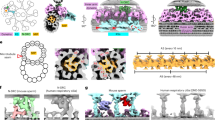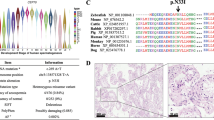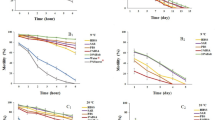Abstract
MATHUR (preceding communication and ref. 1), in his communications, has again stressed that the thysanuran sperm is a typical flagellate one, having the acrosome and the centriole located at the proximal and distal end of the nucleus. I disagree with him and have the following comments to make in this context.
This is a preview of subscription content, access via your institution
Access options
Subscribe to this journal
Receive 51 print issues and online access
$199.00 per year
only $3.90 per issue
Buy this article
- Purchase on SpringerLink
- Instant access to full article PDF
Prices may be subject to local taxes which are calculated during checkout
Similar content being viewed by others
References
Mathur, R. S., Nature, 188, 164 (1960).
Bawa, S. R., J. App. Phys., 31, 1847 (1960) ; Nature, 188, 1132 (1960); J. Morphol., 107, 141 (1960).
Gatenby, J. Brontë, and Mathur, R. S., Nature, 185, 861; 186, 900 (1960).
Bowen, R. H., J. Morphol., 39, 351 (1924).
Nath, V., and Bhatia, C. L., Res. Bull. East Panjab Univ., 27 (1953).
Gatenby, J. Bronté, and Tahmisian, T. N., La Cellule, 60, 105 (1959).
Author information
Authors and Affiliations
Rights and permissions
About this article
Cite this article
BAWA, S. Atypical Spermiogenesis in Thermobia domestica, a Thysanuran Insect. Nature 190, 743 (1961). https://doi.org/10.1038/190743b0
Issue date:
DOI: https://doi.org/10.1038/190743b0



